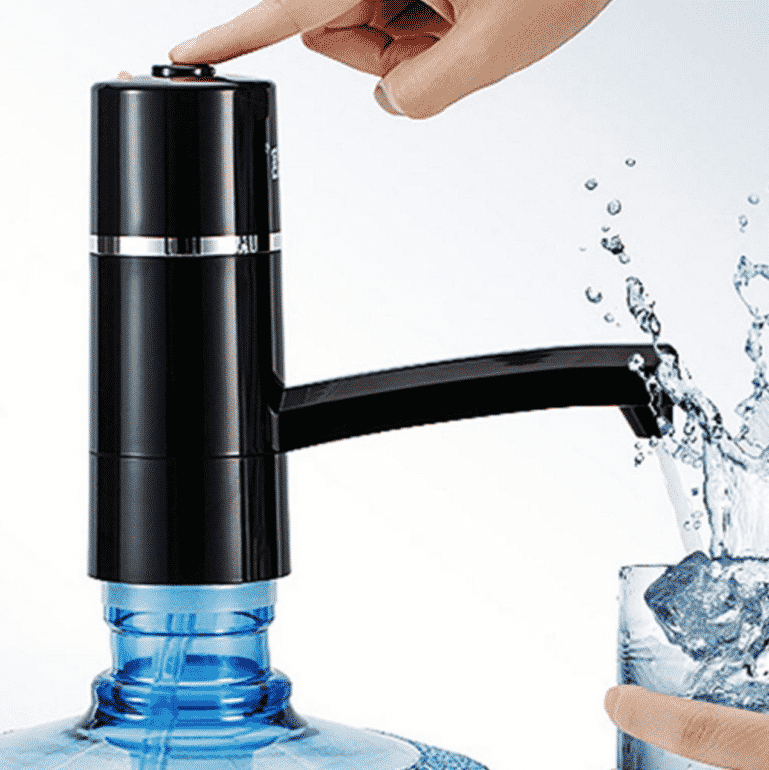How to Clean Your Water Dispenser and Water Cooler

Some people never think about how dirty a water cooler can be, but it can be filthy. It can be so dirty, that it can be harmful to your health. A water dispenser or water cooler needs to be sanitized and cleaned occasionally. Remember, microbes love moisture so a water cooler can have plenty.
Here’s how to clean a water cooler, inside and outside. By following these tips, can you quickly clean your water dispenser and ensure the water you drink is clean.
Note: Consult the owner’s manual for the manufacturer’s cleaning instructions. Water coolers can have a different anatomy, so reading the manual can help ensure you don’t damage or break the unit.
How to Clean a Water Dispenser
Before you clean the water cooler, make sure the water jug is empty. Your life will be easier if you don’t have to lift a heavy bottle filled with water and have water sloshing everywhere. Water is heavy and you can injure yourself trying to maneuver the bottle around without spilling any liquid.
Supplies:
Gallon pitcher or jug
3 cups hot water
1 cup distilled white vinegar
Mild dishwashing liquid
Bucket
Microfiber cloth
Gloves for dishwashing (optional)
Instructions:
Unplug the water cooler to remove the bottle.
Use the cold tap to drain any remaining water from the cooler into the jug or pitcher. This is drinkable water.
Remove the water guard inside the cooler if one is present. The water guard is how the water bottle is punctured when you place the bottle int he cooler. It is not present in all coolers.
Remove the baffle gently which is a disc made of metal or plastic.
Wash the baffle and water guard with a mixture of dishwashing liquid and water. Wash it the same way you’d wash dishes by hand.
Rinse the water guard and baffle to make sure there is no soap on the surface. Set each item aside on a dry, clean microfiber cloth.
Mix the distilled white vinegar and how water. Pour the mixture into the cooler reservoir. If you have sensitive skin, wear gloves.
Wipe the reservoir’s inside using the microfiber cloth and vinegar solution. Drain the solution in the reservoir into the bucket.
Rinse the reservoir with clean water. Fill the reservoir and drain it into a bucket.
Place the water guard and baffle back in the water cooler.
Place a new water bottle into the cooler and plug the unit back in.
How to Clean a Water Cooler on the Outside (Including the Taps)
After you clean the inside of the water cooler, you should work on the outside of the water dispenser. Consider how many hands touch the unit or what has gone inside the taps. Luckily, this can be an easy task.
Supplies:
Distilled white vinegar
Spray bottle
Mild dishwashing liquid
Microfiber Cloths
Instructions:
Unplug the unit
Remove the trays and taps. Wash these items in the sink with a mixture of warm water and dishwashing liquid.
Wipe the trays and taps dry using the microfiber cloth.
Pour the vinegar into the spray bottle.
Spritz the cooler’s outside with vinegar. Make sure to include the area where you place the tray. Be careful if the floor in your kitchen is made from stone since that surface can be damaged by vinegar.
Use a microfiber cloth to wipe any vinegar residue or grime from the unit.
Place the tray and taps back on the unit.
Plug in the water cooler.
How to Sanitize Your Water Cooler
Manufacturers recommend that you should sanitize a water cooler every three to six months. Check your owner’s manual for the manufacturer’s instructions to ensure that you sanitize your unit as often as needed.
Sanitizing the water cooler is tricky, and if you do it improperly, you may end up with water that tastes funny or is harmful. You need to ensure you don’t leave the sanitizer in too long. Some people use bleach to sanitize their water cooler. However, if you cleaned your water cooler with vinegar, this may be an issue. Bleach and vinegar should not be combined since they can create a toxic chlorine gas when mixed.
It’s a good idea to read the instructions available for cleaning and sanitizing your water cooler. You can also ask your water service provider if they have something they offer that can sanitize the unit. Consider using the products recommended for the unit which can help you avoid damaging the unit and causing issues with your health.
If you need tips on how to hire a cleaning company or keep your home clean on your own, contact Denver House Cleaning Services today.
